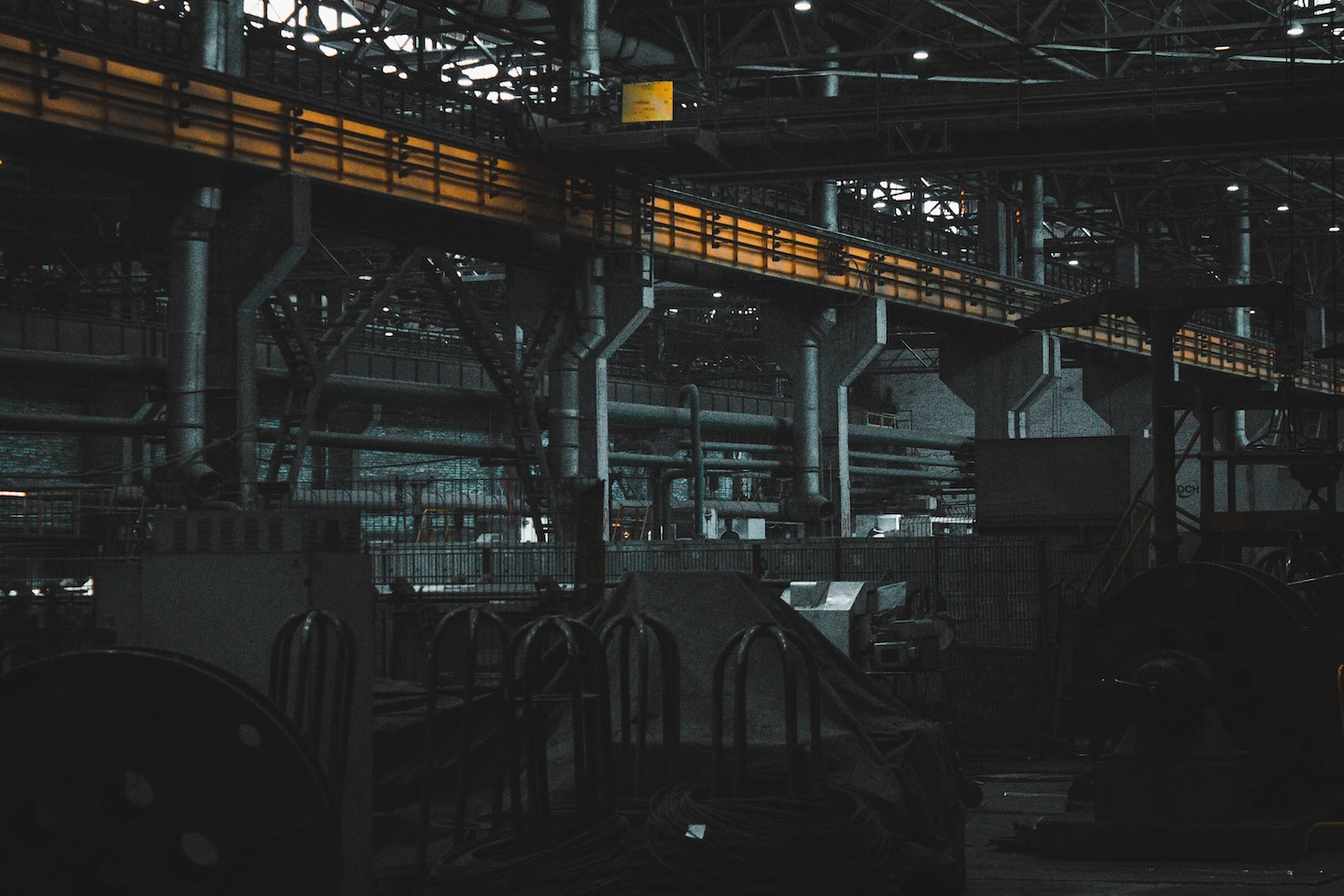Rising shareholder activism is fueling a new wave of unsolicited takeover attempts — and many industrial firms aren’t ready. As mid-cap targets come under pressure from activists and opportunistic buyers, leadership teams must rethink how they defend their strategy, engage shareholders, and chart a long-term path that goes beyond just fending off a raid.
Introduction
The post-COVID era has reshaped the M&A landscape. While overall dealmaking has slowed, a specific trend is gaining pace: activist-driven and unsolicited M&A. This shift is especially pronounced in the industrials sector, where mid-cap companies are increasingly in the crosshairs.
We define unsolicited M&A to include activist investor campaigns and hostile takeover attempts — both aimed at gaining significant or total control of a company’s shares in order to reshape its strategic direction and drive short-term shareholder returns. Though often framed as mechanisms for market efficiency, these tactics frequently overlook the long-term goals of the business and risk undermining sustainable value creation.
In 2024, unsolicited deals accounted for roughly 11% of global M&A activity With shareholder activism rising sharply and many campaigns culminating in acquisition pressure, unsolicited M&A is becoming an increasingly urgent challenge for leadership teams — particularly in industrial companies with limited defensive infrastructure.
Shareholder Activism is Rising — Especially in Industrials
Global shareholder activism has surged in the wake of the pandemic, with 2024 recording a new peak in campaigns. In the U.S. alone, activism activity rose 8% year-over-year (Exhibit 1).
Exhibit 1

Notably, industrial companies were the most targeted sector globally, accounting for 22% of campaigns in 2024 and averaging 23% over the previous five years (Exhibit 2).
Exhibit 2

This is no coincidence. More recently, activists are increasingly focusing on mid-cap companies ($2–10B market cap), where industrial firms are heavily represented (Exhibit 3). These companies attract investor attention but often lack the hardened defense mechanisms of large-cap peers — making them more vulnerable to external pressure.
Exhibit 3

A surge in hostile M&A Attempts
Beyond campaigns for board changes or divestitures, we’re seeing a growing number of outright unsolicited takeover attempts. Recent high-profile examples in the industrials sector include:
- QXO’s acquisition of Beacon Roofing Supply: In March of 2024, Beacon Roofing Supply, the 2nd largest provider of roofing products in the US, agreed to a $11 Bn buyout from billionaire Brad Jacobs’ firm QXO. This deal was a months-long takeover saga that gives QXO a significant advantage in the building products sector as they have access to Beacon’s expansive network of branches across North America This takeover comes after Beacon’s “poison pill” strategy failed, where they gave special privileges to existing shareholders to make the cost of acquisition more expensive. Jacobs refused to be stopped by this move, claiming it was the “only thing stopping shareholders from acting to get cash expeditiously”, and took his $11 Bn takeover offer directly to Beacon shareholders.
- Emerson Electric’s pursuit of National Instruments: In January of 2023, Emerson Electric Co disclosed a $7Bn bid to buy National Instruments Corp, a firm which they had been persistently trying to buy for months. In response to the acquisition interest, National Instruments adopted a “poison pill”, along with announcing a strategic review. In April, the two finally came to an agreement with Emerson Electric buying them out for a total of $8.2 Bn. This came after months of pursuit, a failure of the poison pill defense, and the process eventually becoming competitive with multiple bidders emerging.
- Nidec’s failed bid for Makino Milling Machine: In December of 2024, Japanese manufacturing giant Nidec launched a unsolicited $1.8 Bn bid for Makino Milling Machine, a surprise unsolicited takeover offer. This tender offer was set to open in April, but Makino leapt into defense mode in March, stating that they would mount a “poison pill” defense is Nidec did not give them more time to consider competing proposals. Nidec took this issue to the Tokyo District Court, but the courts ultimately granted Makino the ability to mount this defense, forcing Nidec to withdraw their bid.
The most recent of this growing trend is QXO re-entering the ring, now targeting GMS. GMS is a leading North American distributor of specialty building products, serving both commercial construction and residential markets. In a recent letter to the President and CEO of GMS, QXO delivered an unsolicited offer to purchase all outstanding shares of GMS for $97.20 in an all-cash deal. QXO points out several operational inefficiencies with GMS, highlighting their persistent EBITDA & EBITDA margin decline, along with highlighting reduced confidence from sell-side analysts, who have docked the price per share from $105 a year ago to just $80. QXO explicitly highlights their willingness to make this a hostile bid as well, stating that if “[GMS] choose not to engage with us…we are prepared to take our Offer directly to GMS’s shareholders who we’re confident will find the Offer attractive.”
Why Activist and Hostile Strategies Often Fall Short
While often positioned as shareholder-friendly, activist campaigns and hostile M&A attempts are frequently shortsighted and value-destructive over the long term:
- By far, the two most often stated objects pertained to board changes and M&A; in 2024, 33% of campaigns globally focused on board composition and 30% focused on M&A. These far outweighed focus on components like governance, strategy, operations, and management change.
- From 2014 to 2018, companies targeted by activists underperformed the S&P 500 by 200–700 basis points over a five-year period (Exhibit 4).
- Hostile acquirers experience an average -2.5% abnormal return, driven by excessive premiums, legal costs, and integration failures.
Exhibit 4

What should management do?
Most raid defense strategy hinges on preventive measures, rather than ex post advice. For industrial firms in the middle market, there are 2 core ex-ante measures to prevent unsolicited M&A:
- Have proactive boards – typically unsolicited M&A will show up when there is an apparent problem in the company, especially if there is a problem apparent to shareholders. Have regular reviews of the company’s operational health and long-term strategy.
- Play defense – Push back against activists by making your case directly to shareholders. Having a robust investor relations arm will help do this to convince shareholders of why the existing long-term strategy will leave them better off than the instant cash.
But for many, it’s already the case that they are under attack from unsolicited M&A attempts. In that case, empirical examples and legal advice tell us that there are a few strategies to adopt:
- “Shark Repellent” Techniques: Develop shareholder rights plans, introduce lucrative severance packages for your executives, institute supermajority voting. Anything that would make it harder for an activist or hostile actor to win over your board or have a reasonable cost of acquisition.
- Poison Pill Techniques: Issue new shares or take on debt to dilute the stake of the acquirer, making the takeover unviable at the premium price they are willing to pay.
- White Knight Strategies: Seek out a friendly acquirer that is more in line with the target outcome for shareholders and management.
While these are raid defense technique have been empirically successful to some degree, they all have strong downsides. The first technique introduces unnecessary complexity into the governance structure of the company that could even prevent strategic M&A down the line. Poison pill techniques wipe out market cap instantly in the short run and have ethical ambiguity; moreover, they are nearly irrelevant in the modern day with fewer than 2% of companies in the S&P 500 having a poison pill in place. White Knight strategies seem benevolent, but they are not an optimal outcome if you are not looking to sell the company and can lead to bidding wars, as seen in the case of QXO’s proposed acquisition of GMS with Home Depot now entering the fold
A Better Alternative: Supportive and Collaborative Investing
As unsolicited M&A and activist pressure mount—especially in mid-cap industrials—some companies are exploring a quieter, more constructive alternative: Supportive & Collaborative (S&C) Investing. This model offers a way to bring in committed private capital that supports transformation without the disruption of a proxy fight or hostile bid.
In a typical structure, an S&C investor acquires a 2–10% stake at a ~5% premium and takes 2–3 board seats. Their return depends on real operating gains: redesigning capital structure, improving margins, and reigniting growth. Exit terms are predefined—usually 18–24 months, with an option to sell shares back at a premium. Both sides are aligned on value creation through execution.
- Confidence Without the Drama: S&C investment signals confidence to the market while avoiding the noise of activism. The premium paid reflects belief in the company’s potential, often lifting share price. Because it’s a private deal with a minority investor, it doesn’t attract media attention or disrupt operations. Management can stay focused on delivering outcomes, not managing headlines.
- Focused Transformation: Unlike activists, S&C investors help drive targeted change. They roll up their sleeves—bringing tools and know-how across pricing, procurement, digital, and supply chain. Because their exit hinges on results, they’re fully aligned on improving performance—not forcing a sale or reshuffling leadership. One packaging company unlocked margin growth of 400 bps after an S&C-led push on SKU rationalization, pricing, and cost takeout. A semiconductor firm saw gross margins jump 1,380 bps in under two years, driven by improvements across sales, operations, and R&D.
- Impact That Lasts: S&C-backed transformations go beyond quick wins. They strengthen capabilities, embed tools, and deliver lasting gains. One infrastructure manufacturer worked with its investor to reset pricing, boost supply chain agility, and digitize operations—raising EBITDA margins and positioning for long-term success. Another company in ground support equipment used S&C investment to turn around declining revenues. A two-year transformation brought its revenue CAGR from negative to +20%, with improved margins and stronger execution discipline.
- Aligned, Not Adversarial: What sets Supportive & Collaborative (S&C) investing apart is the nature of the relationship it fosters with management: aligned, engaged, and outcome-oriented. Unlike activist campaigns or hostile bids—which often involve public pressure, boardroom conflict, or forced leadership changes, S&C investors work alongside company leadership as true partners in transformation, with shared goals and clearly defined exit paths.
A case in point is a U.S.-based residential solar company that, in early 2024, was grappling with severe liquidity constraints, stalled operations, and operational breakdowns. An S&C investor stepped in at a critical juncture to support a three-phase turnaround focused on stabilization, recapitalization, and disciplined scaling.
The company first paused new sales to focus on completing delayed projects and unlocking cash through better collections. A daily war-room approach was introduced, procurement was centralized and restructured, and operating expenses were tightly managed. These moves helped stabilize operations and bought time.
Next came balance sheet repair. The company negotiated its way out of restrictive private equity debt and brought in new growth capital to clear backlogs, restart projects, and fund future initiatives. This provided the breathing room it needed to look forward again.
With the financial foundation reset, the company executed a bold acquisition—adding valuable capabilities and market reach. Integration was swift, cost structures were reworked, and leadership applied a startup mindset with industrial-grade discipline. Operational rigor—down to tracking hiring approvals multiple times per week—ensured efficiencies were locked in. IT systems were unified, overhead slashed, and productivity metrics improved sharply.
By early 2025, the results were visible. Revenue had rebounded, the company returned to profitability, and its cash position stabilized. While challenges remain, the business is now operating with focus, resilience, and a path to scale—backed by an investor with skin in the game and a commitment to long-term value creation.
This example underscores the power of aligned capital: no public spectacle, no pressure tactics—just disciplined, hands-on support that helps a business rebuild, compete, and grow.
The Final Word
Shareholder activism has surged, especially in industrials, often bringing calls for board changes, M&A, or cost cuts. But long-term returns from activist campaigns have typically underperformed the S&P 500. Many leaders are now looking for alternatives—ones that protect value and unlock it.
Supportive & Collaborative Investing is that alternative. It avoids short-termism, works quietly alongside management, and delivers results that endure. It’s not just capital—it’s partnership capital. And at a time when unsolicited bids are rising, it offers companies a proactive path forward: to transform before they’re targeted.
To learn more visit our Supportive and Collaborative Investment Offering and read more here.






















